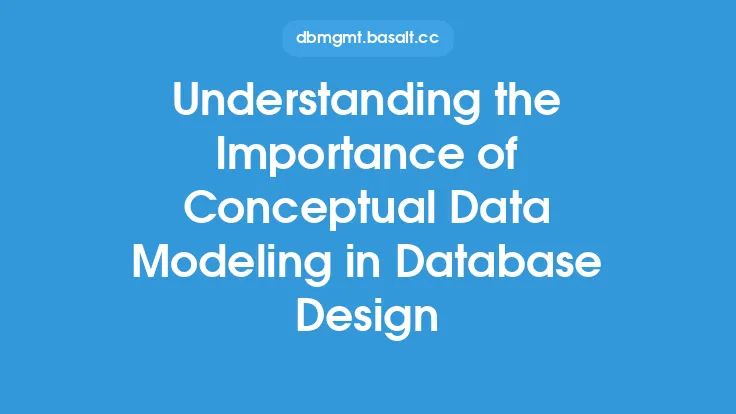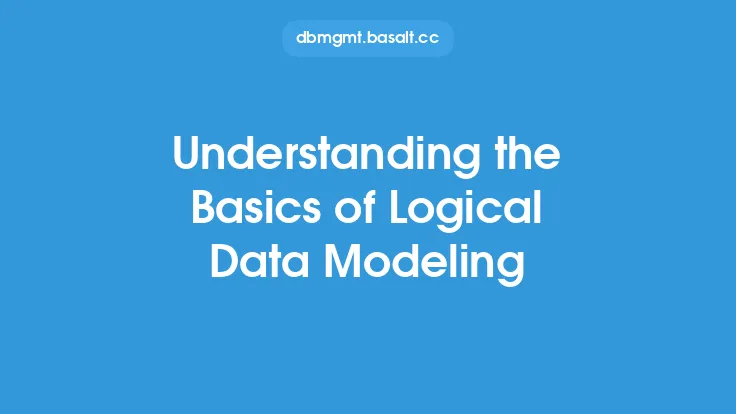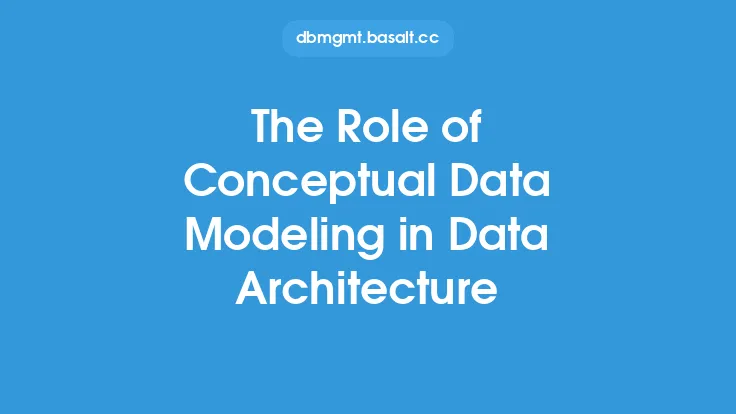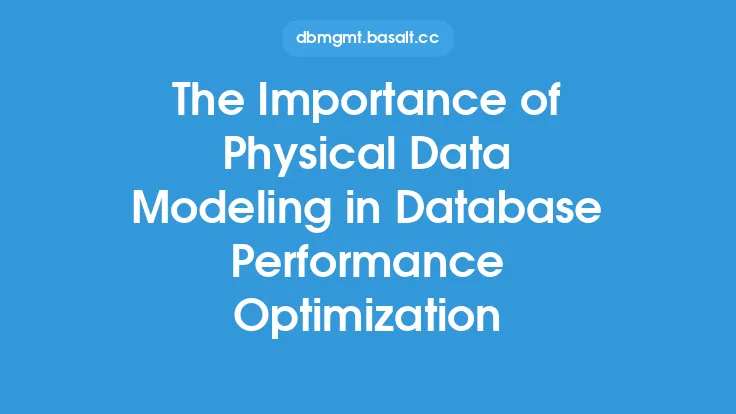Data modeling is a crucial aspect of database design, as it enables organizations to create a conceptual representation of their data, ensuring that it is well-structured, consistent, and scalable. At its core, data modeling involves identifying the key entities, attributes, and relationships within an organization's data, and representing them in a way that is easy to understand and maintain. In this article, we will delve into the fundamentals of data modeling, exploring the key concepts, principles, and techniques that underpin this critical discipline.
Introduction to Data Modeling Concepts
Data modeling concepts are the building blocks of a data model, and they provide a framework for understanding and representing an organization's data. The key concepts in data modeling include entities, attributes, relationships, and data types. Entities are the objects or concepts that are being modeled, such as customers, orders, or products. Attributes are the characteristics or properties of these entities, such as customer name, order date, or product price. Relationships describe how entities interact with each other, such as a customer placing an order or a product being part of an order. Data types define the format and constraints of the data, such as integer, string, or date.
Data Modeling Principles
Data modeling principles provide a set of guidelines and best practices for creating a robust and maintainable data model. One of the key principles is to ensure that the data model is consistent and unambiguous, with clear and concise definitions of each entity, attribute, and relationship. Another principle is to minimize data redundancy, by avoiding duplicate data and ensuring that each piece of data has a single, authoritative source. Data models should also be flexible and adaptable, able to evolve and change as the organization's needs and requirements change. Additionally, data models should be scalable, able to handle increasing volumes of data and user activity.
Entity-Relationship Modeling
Entity-relationship modeling is a fundamental technique in data modeling, which involves representing entities and their relationships as a set of tables, with each table representing an entity and each row representing a single instance of that entity. The relationships between entities are represented by foreign keys, which are columns in one table that reference the primary key of another table. Entity-relationship modeling provides a powerful way to represent complex data relationships, and it is widely used in database design and data modeling.
Data Modeling Notations
Data modeling notations provide a standardized way to represent data models, using a set of symbols, diagrams, and conventions to convey the structure and relationships of the data. The most common data modeling notations are Entity-Relationship Diagrams (ERDs) and Object-Role Modeling (ORM) diagrams. ERDs use a set of symbols and diagrams to represent entities, attributes, and relationships, while ORM diagrams use a more formal and structured approach to represent the data model. Data modeling notations provide a common language and framework for data modelers to communicate and share their designs.
Data Modeling Tools and Techniques
Data modeling tools and techniques provide a range of software and methodologies to support the data modeling process. Data modeling tools, such as Entity-Relationship Diagramming tools and data modeling software, provide a graphical interface for creating and editing data models. Data modeling techniques, such as data normalization and data denormalization, provide a set of methods and algorithms for optimizing and refining the data model. Additionally, data modeling frameworks and methodologies, such as the Zachman Framework and the Data Modeling Framework, provide a structured approach to data modeling, with a set of guidelines, templates, and best practices to support the data modeling process.
Data Modeling Best Practices
Data modeling best practices provide a set of guidelines and recommendations for creating a high-quality data model. One of the key best practices is to involve stakeholders and subject matter experts in the data modeling process, to ensure that the data model accurately reflects the organization's needs and requirements. Another best practice is to use a iterative and incremental approach to data modeling, with regular reviews and refinements to ensure that the data model is accurate and up-to-date. Data models should also be well-documented, with clear and concise descriptions of each entity, attribute, and relationship. Additionally, data models should be regularly reviewed and updated, to ensure that they remain relevant and effective over time.
Conclusion
In conclusion, data modeling is a critical discipline that provides a framework for understanding and representing an organization's data. By applying the principles, concepts, and techniques of data modeling, organizations can create a robust and maintainable data model, which provides a foundation for database design, data integration, and business intelligence. Whether you are a data modeler, database administrator, or business analyst, understanding the fundamentals of data modeling is essential for creating a well-structured and scalable data architecture. By following the best practices and guidelines outlined in this article, you can create a high-quality data model that supports the needs of your organization, and provides a foundation for future growth and success.





